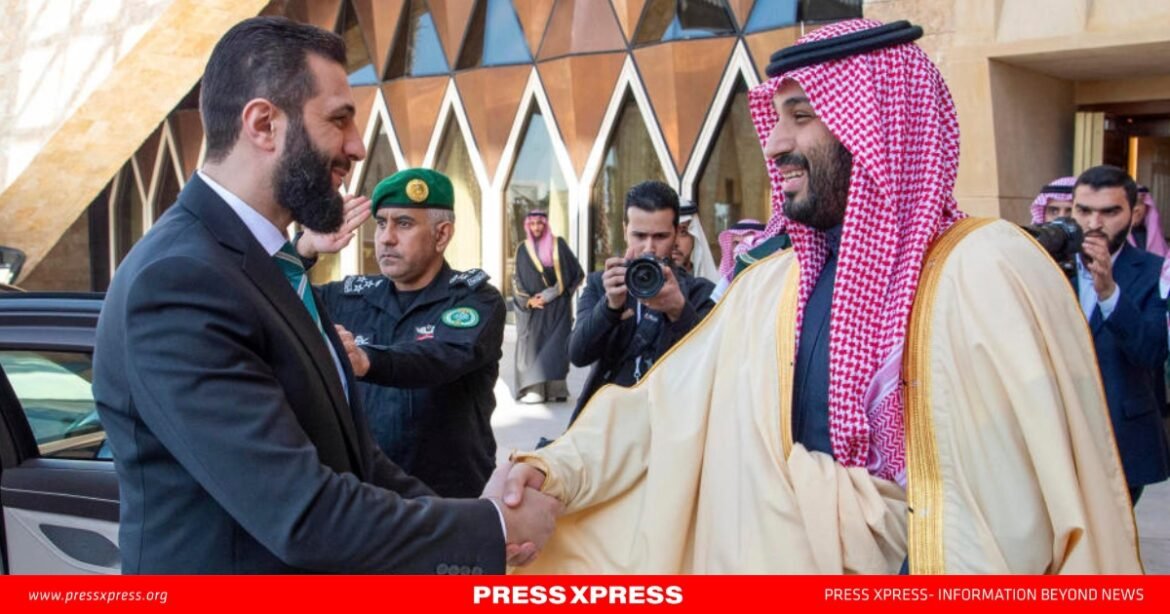Syria’s interim president’s visit to Saudi Arabia represents more than a diplomatic gesture—it signals a potential realignment of regional alliances
The recent visit of Syria’s interim president, Ahmad al-Sharaa, to Saudi Arabia marks a significant shift in regional dynamics, signaling potential changes in Syria’s alliances. As the first foreign trip since assuming office, the visit underscores a calculated move by Damascus to realign its foreign policy, distancing itself from long-time allies Iran and Russia while strengthening ties with Saudi Arabia. This geopolitical shift could have profound implications for the balance of power in the Middle East.
Historical Context: Syria’s Political Landscape
Since the onset of the Syrian civil war in 2011, the country has been at the center of regional conflicts, with Iran and Russia playing a crucial role in propping up the regime of Bashar al-Assad. However, with Assad’s departure and al-Sharaa’s rise to power, there are growing indications that Syria may be attempting to reduce its dependence on Tehran and Moscow, in favor of forging stronger relations with Gulf states, particularly Saudi Arabia.
Why Saudi Arabia?
Saudi Arabia’s role in the Syrian conflict has evolved significantly over the years. Initially, Riyadh supported insurgent groups in an effort to remove Assad from power. However, the failure of these groups to achieve decisive victory led Saudi Arabia to pivot its strategy.
By normalizing ties with Syria’s new leadership, Saudi Arabia aims to:
Limit Iranian Influence: The kingdom has long viewed Iran’s regional ambitions as a threat. By strengthening its relationship with Syria, Saudi Arabia could counterbalance Iran’s presence in the Levant.
Ensure Stability: A stable Syria aligns with Riyadh’s broader regional strategy of economic diversification and reducing security threats along its periphery.
Facilitate Reconstruction Efforts: Post-war Syria requires significant reconstruction, and Saudi Arabia, with its vast financial resources, could play a key role in rebuilding efforts in exchange for strategic influence.
Iran and Russia: Waning Influence?
Iran, which once maintained a strong foothold in Syria, has yet to reopen its embassy in Damascus. The absence of direct Iranian engagement suggests a weakening of ties between the two nations. Similarly, Russia, which provided military and diplomatic support to Assad, now appears more focused on maintaining its strategic assets in Syria, such as air and naval bases, rather than actively shaping political outcomes.
The implications of this shift include:
- Reduced Iranian leverage in Syria’s political and military affairs
- Potential constraints on Russia’s ability to use Syria as a strategic military outpost
- Increased Western engagement if Syria is perceived as moving away from anti-Western blocs
Implications for the Middle East
This realignment could lead to several geopolitical developments:
Normalization of Syria-Gulf Relations: Saudi Arabia’s engagement may encourage other Gulf Cooperation Council (GCC) states to strengthen ties with Syria, leading to increased economic and diplomatic cooperation.
Impact on Regional Conflicts: A shift away from Iran could weaken the “Axis of Resistance,” comprising Iran, Hezbollah, and allied militias, potentially altering conflict dynamics in Lebanon, Iraq, and Yemen.
US and Western Interests: The West may see this as an opportunity to re-engage with Syria on economic and security issues, particularly concerning counterterrorism efforts and sanctions relief.
Challenges with Turkey and Qatar: While Saudi Arabia has restored ties with Damascus, Turkey and Qatar remain cautious. Their backing of certain Syrian rebel factions may create friction in Syria’s diplomatic reconfiguration.
Challenges and Uncertainties
Despite the symbolic significance of al-Sharaa’s visit, several challenges remain:
Internal Security Threats:Syria continues to grapple with terrorist groups such as ISIS, which poses a threat to its stability.
Sanctions and Economic Hardship: Lifting Western sanctions remains a crucial hurdle for Syria’s economic recovery.
Domestic Political Struggles: The new leadership must balance domestic and international expectations while maintaining legitimacy within Syria’s complex political landscape.
Conclusion
Syria’s interim president’s visit to Saudi Arabia represents more than a diplomatic gesture—it signals a potential realignment of regional alliances. As Damascus attempts to navigate shifting geopolitical currents, the consequences of this pivot will shape the broader Middle Eastern political landscape. Whether this move leads to sustained stability and economic recovery or exacerbates regional tensions remains to be seen. However, one thing is certain: Syria’s political trajectory is entering a new and unpredictable phase.


